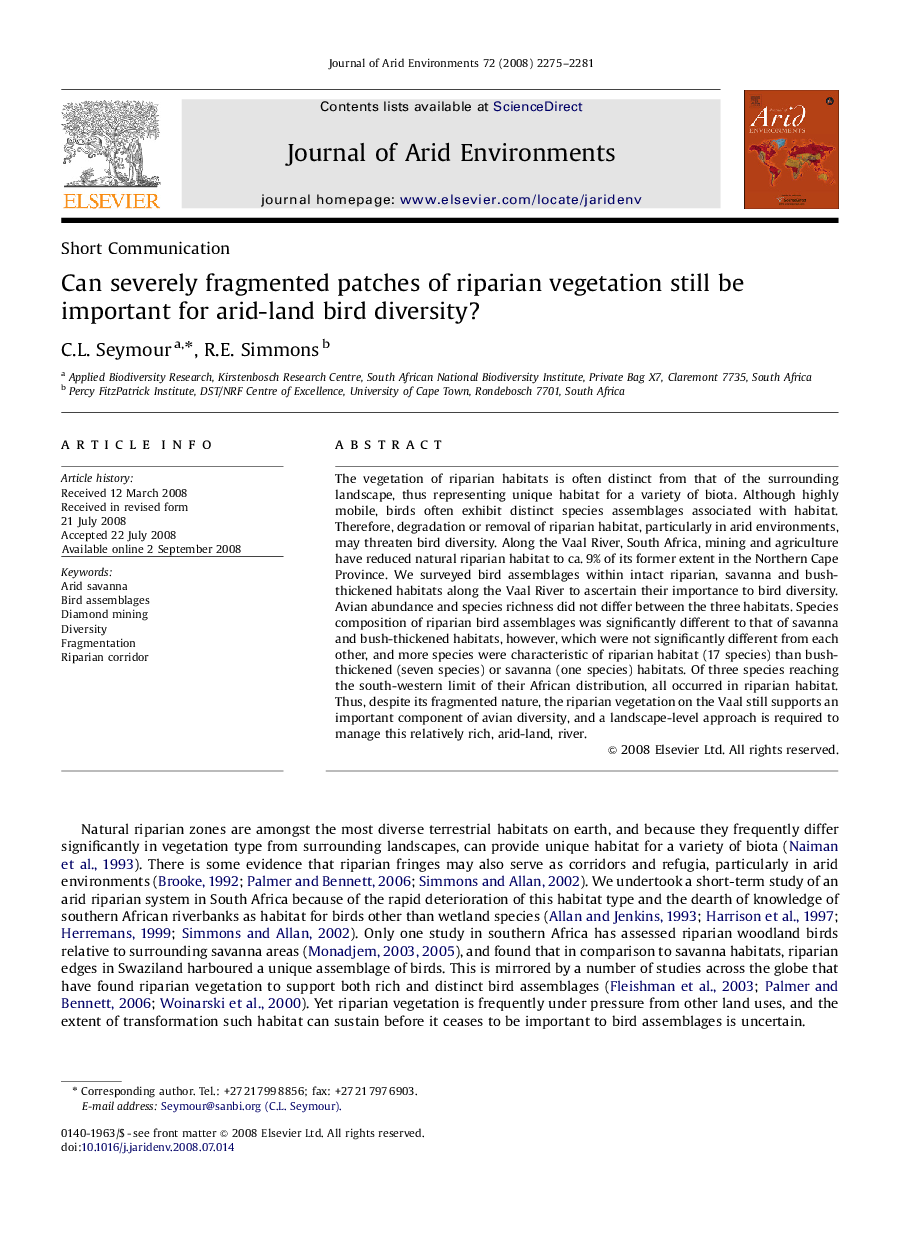| Article ID | Journal | Published Year | Pages | File Type |
|---|---|---|---|---|
| 4394000 | Journal of Arid Environments | 2008 | 7 Pages |
Abstract
The vegetation of riparian habitats is often distinct from that of the surrounding landscape, thus representing unique habitat for a variety of biota. Although highly mobile, birds often exhibit distinct species assemblages associated with habitat. Therefore, degradation or removal of riparian habitat, particularly in arid environments, may threaten bird diversity. Along the Vaal River, South Africa, mining and agriculture have reduced natural riparian habitat to ca. 9% of its former extent in the Northern Cape Province. We surveyed bird assemblages within intact riparian, savanna and bush-thickened habitats along the Vaal River to ascertain their importance to bird diversity. Avian abundance and species richness did not differ between the three habitats. Species composition of riparian bird assemblages was significantly different to that of savanna and bush-thickened habitats, however, which were not significantly different from each other, and more species were characteristic of riparian habitat (17 species) than bush-thickened (seven species) or savanna (one species) habitats. Of three species reaching the south-western limit of their African distribution, all occurred in riparian habitat. Thus, despite its fragmented nature, the riparian vegetation on the Vaal still supports an important component of avian diversity, and a landscape-level approach is required to manage this relatively rich, arid-land, river.
Related Topics
Physical Sciences and Engineering
Earth and Planetary Sciences
Earth-Surface Processes
Authors
C.L. Seymour, R.E. Simmons,
